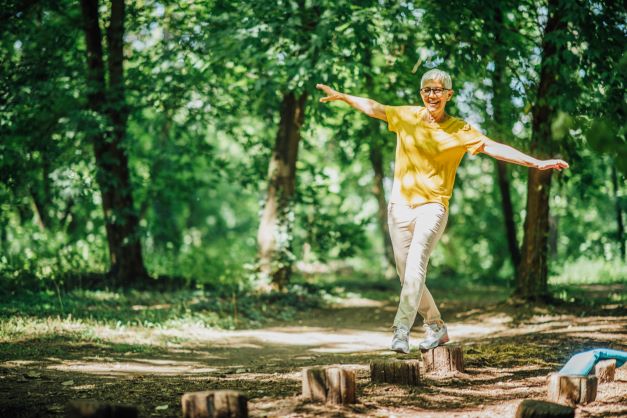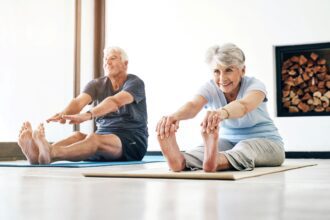Fall prevention – balance
As we age Fall prevention becomes very important. Impairments in balance is one of the most common reasons for falls in the elderly. However balance can be significantly improved if it is managed correctly, identified early, and treated appropriately alongside your healthcare professional. Read more here:
Original article sourced from the Australian Carers Guide Magazine. For your free digital magazine copy click HERE.
Impairments in balance is one of the most common reasons for falls to occur in the aging population. Balance can however be significantly improved if it is managed correctly, identified early, and treated appropriately alongside your healthcare professional. This allows greater independence for individuals with a decreased risk of falls.
The key to improving balance impairments involves correct identification of the underlying cause. There are many different medical conditions, which can cause a change in balance such as diabetes, vertigo, visual impairment, some medications and cognitive conditions.
Maintaining balance requires inputs from a visual stimulus, the vestibular system of the inner ear as well as our muscles and joints sending sensory input to the brain to determine where the body is in relation to the space around us. If any one of these systems are thrown out of balance, so is your centre of gravity and overall balance.
What to do about balance changes
When noticing changes in balance, it is important to ask yourself or your loved one:
- How long has my balance been deteriorating?
- Have I been having more falls or a decrease in mobility?
- Are you able to walk around independently without holding onto something?
- Are you feeling a dizzy or wobbly sensation?
- Has there been any changes in sensation in the legs such as numbness, tingling or pain?
- Is there anything new that could have caused this? For example, have you just started taking a new medication?
Any new onset changes should be discussed with your general practitioner. They will give you a full physical check to see if any recent changes that could have induced the changes in balance. This could include new medications, changes in blood pressure or as a result of a recent injury. Long periods of bed rest or immobility can also have an impact on your stability as you can have decreases in muscle tone.
Exercise for recovery
If physical changes in balance are persistent after an injury or surgery, it could be beneficial to obtain a referral to a physiotherapist. A physiotherapist is a great resource for increasing mobility, strength and balance through exercises and movement. Their role is to give you an assessment and tailor a plan of exercises based on your individual needs and conditions. They will also assess the need for mobility aids, at home equipment or refer further help from carers if required.
People are often surprised how much improvement can be made in their balance by simply practicing it. Standing up with an aid such as a solid table, frame or kitchen bench can help to stabilise you.
If you feel unsteady or wobbly – you most likely are! After a while of trying this, if you begin to feel more comfortable standing up with assistance, try slowly challenging your balance by using it a little bit less each time. Make sure you are very careful when doing this and always have something you could hold on to if needed.
The benefits of exercise for balance
Implementing exercise into your daily life is incredibly important to maintain health, muscle tone and overall fitness.
It also has great benefits on your mental and cardiovascular health. The term Sarcopenia refers to the onset of muscle loss associated with aging, this involuntary loss causes decreases in strength and function. It is one of the main causes of disability in the elderly population.
Studies have shown that maintaining exercise, even at a mild intensity can improve the loss of muscle tone in elderly individuals. If you want to improve your physical fitness but are not sure where to start, it is important not to overdo it. Doing too much exercise or at too high of an intensity for your fitness levels can result in injury. If you are not sure where to start, book in a consult with a physiotherapist or your doctor. When exercising, it is most important to ensure that you are doing it in a safe manner and not putting yourself at risk of injury.
Some exercises, which can be helpful, include:
Marching on the spot
Try to elevate your knees as high off the ground as you can. To make it a bit more difficult, slow down the exercise or hold your knee elevated at the top for a couple of seconds.
Balancing on one leg
Start slow and try balance on the one leg for 5–10 seconds, then slowly increase the time as your balance improves.
“Tightrope” walking
Try taking a few steps with one foot in front of the other, heel to toe. It simulates walking on a tightrope. You can challenge yourself by increasing the time that you hold it for.
Calf raises
With both feet together, hold onto a solid surface and slowly raise up your heels as high as you can until you are standing on the balls of your feet. Then, slowly lower your heels back down to the ground. Repeat this 10–15 times.
Standing/sitting
Use a sturdy chair and practise standing up without using your arms as much as you can. Then sit back down and repeat around 5–10 times. Make sure that you sit back down slowly.
Side leg raises
With both feet together, hold onto a sold surface. Raise your straight leg to the side with toes pointed. Hold this in position for as long as you can and then bring it back to the centre and repeat on the opposite side. Try to do 5–10 on each side.
Original article sourced from the Australian Carers Guide Magazine, Australia’s first and only publication created for informal-unpaid primary carers. Visit their website and download a free magazine copy HERE.
For the original and complete article – australiancarersguide.com.au/6-ways-to-improve-your-balance/
Interested in similar articles? Why not check these out:











